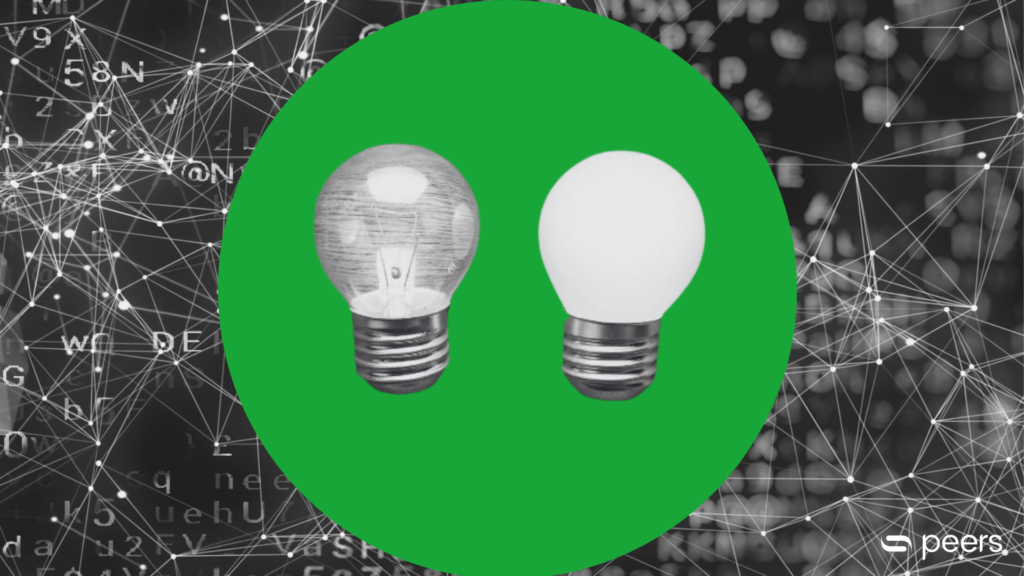Expand the possibilities of your technology: What solutions exist?
In the context of Advanced analytics, our experts in the forecasting workshop deal not only with Predictive modelling, our experts in the forecasting workshop deal with other methods of data analysis. These include, for example:
Predictive analytics
- More accurate forecasts compared to manual activity
- Less susceptibility to errors due to objective forecasts
- Time and cost savings due to the automated process and
- An AI-driven forecasting system supports the gut feeling and can back up empirical values with analyses and figures.
Customer segmentation
- Effective use of marketing and sales efforts
- Customer needs can be determined and the right measures derived from them.
- Reduction of wastage
- Customer loyalty and understanding
Customer lifetime value
- Definition and calculation of a customer value for better estimation of costs.
- Creation of customer value profiles
- Customer Rentention & Acquisition: How much is an existing customer worth to me and how much is a new customer worth to me?
- CLV & customer relationship: Calculation of the CLV to optimize costs and the relationship between a company and its customers.
- its customers.
Predictive Sales Forecast Starter
- Automated rolling long-term forecast of sales volumes and turnover for all business units with a very high forecasting accuracy can be created at the push of a button
- Intelligent analysis aids (monitoring) efficiently support the monitoring of data quality (outlier analyses)
- and much more
BOM explosion
- Full transparency for costs, use of materials and hours spent
- Time saving in data preparation
- Costing overview through the parts list explosion
- Comparative analyses of different dimensions
The Advaced Analytics solution convinces with the following advantages
Anticipatory action in contrast to the classic concept of Business Intelligence (BI)
Reversed approach: Before the analysis, the desired problem is defined
Analysis from different and also unstructured sources such as images or videos possible
Automation detects patterns in huge amounts of data that would not be detectable manually
Using data as strategic information - What is Advanced Analytics?
In view of the market dynamics (incl. globalisation, commoditisation, liberalisation), the rising flood of data (Big Data) and the hunger for innovation in times of digital change, successful companies are increasingly focusing on gaining competitive advantages from future-oriented reporting solutions: Data is becoming strategic information and thus an important basis for decision-making. In this respect, however, data only gains value if it can be read out as efficiently and precisely as possible - this is the only way to uncover correlations, gain new insights and make accurate plans and forecasts.
The term Advanced Analytics can be defined in distinction to the classic concept of Business Intelligence (BI). With classic standard reporting or BI, the approach is to understand retrospectively why something happened. With advanced analytics, on the other hand, companies put themselves in a position where they can act with foresight. Due to the fundamentally different approach, advanced analytics is often referred to as predictive analytics: This emphasises that it is not simply past events that are examined - rather, the data analyses lead to forecasts about future events.
Why it's worth taking a look at Advanced Analytics:
Advanced analytics requires a fundamentally different and practically inverted approach: First, the desired question or problem is defined. To answer or solve it, individual analyses are then designed and carried out.
This is made possible by reading out flexibly included data sources (ideally from the business itself via self-service BI), while IT provides both the analysis platform and quality and authorisation-compliant data. In combination with up-to-date automation processes, even spontaneously arising business questions of high complexity can be answered promptly, precisely and cost-efficiently.
Advanced Analytics thus not only provides individual information for specific purposes (including planning, identification of success or failure factors, 360° views of customers), but in contrast to traditional standard reporting, can also be used as an effective and maximally flexible analysis platform for active troubleshooting.
Traditional BI analysis platforms usually use an internal company data warehouse as a database. In this case, historical information is aggregated to higher hierarchical levels and made available to users in the form of corresponding reports. Drill-downs provide access to details on lower hierarchical levels. The direction of the analysis thus goes "from the big to the small".
However, with advanced analytics, steering and planning-relevant insights into interrelationships can be gained not only from internal and/or structured data, but also from external and/or unstructured sources (e.g. images, videos, participant texts in online forums or posts in social media) - i.e. from information of completely different kinds. Here, the analysis takes place in the opposite direction "from the small to the large".
In this way, for example, individual customers can be precisely assessed for the purpose of personalised marketing (e.g. in terms of information or purchasing channels, demands on products or services). At the same time, it is possible to record current market sentiments or brand loyalty in real time, if required. Through automation, patterns are recognised that would never be detectable by human analysts in view of the sometimes huge amounts of data (big data).
The SAP Analytics Cloud (SAC) is by no means just a tool for visual presentation, but stands for a unified concept with a strategic character: The SAP product combines all relevant functions around BI/analysis, planning, data connection, dashboarding, reporting, simulation and advanced analytics on a single platform - extended by options for forecasts via predictive analytics. The individual functionalities complement each other and thus increase the overall performance. In parallel, a seamless integration of various data sources (incl. on-premise, non-SAP) is possible.
Central access via self-service BI enables advanced analytics (e.g. retrieval/visualisation of data, creation of reports/plans, forecasts) directly and very user-friendly for end-users in the business units. IT provides the IT governance and quality-relevant data centrally for this purpose. The users are networked via a uniform platform and benefit from facilitated cooperation through modern, interactive collaboration functions.
Thanks to the high-performance in-memory technology of SAP HANA, detailed data analyses can be carried out in real time via SAC. An app rounds off the use of the SAC. Thanks to the responsive design component, the displays adapt to the end device. As a SaaS solution (Software-as-a-Service), SAC can be used very easily and cost-efficiently. Thus, the software always offers up-to-dateness and maximum performance. In addition, the SAC can be implemented quickly, which allows for a productive start at short notice.
Note regarding data security: The SAP Analytics Cloud has the special feature of the so-called "Live Connection". This form of data connection makes it possible to keep only the metadata within the cloud. The actual operational information remains behind the company's firewall and is not acquired into the SAC.
SAC includes algorithms for predictive analyses as standard. Corresponding models can be generated quickly and without statistical know-how. However, the interpretation of the results does require a basic understanding of statistical models.
Even with the functions integrated in the standard system, various forecast models can be generated for end users on the basis of time series analyses. It is also possible to use "Smart Insights" to identify certain correlations of effects based on various influencing factors (e.g. turnover, sales area, product groups). In addition, value factor trees can be determined and alternative courses of action simulated.
Together, all these options optimally close the analytics loop - for example, when different options for planning are to be weighed up and then transferred into the concrete process.
- High-performance HANA platform with real-time access and the ability to connect a wide variety of data sources (internal, external, on-premise, SAP, non-SAP)
- Seamless combination of business intelligence, planning, advanced and predictive analytics on a single platform
- High user-friendliness thanks to self-service BI
- Optimal visualisation (incl. dashboards, diagrams, tables)
- Possibility to use the notation concept IBCS® for maximum efficient decision making
- Interactive functions for collaboration and planning
- Possible output of analyses and reports to mobile devices
- Optimal cost efficiency, up-to-dateness and performance thanks to SaaS concept (Software-as-a-Service)
- Implementation and production start-up possible very quickly
Some SAP components for advanced analytics - e.g. the SAP HANA PAL (Predictive Analysis Library) - can be operated on the company's own hardware. These components are complemented by the SAP Analytics Cloud, which provides new analytics solutions with rapid onboarding requirements.
Companies are by no means forced to immediately and completely replace their on-premise systems with cloud solutions. Rather, it makes sense to gradually set up a hybrid solution of SAC and on-premise. In this way, existing systems can continue to be used, but innovations in the cloud can be added in a targeted and efficient manner. Especially for the implementation of new projects in the context of advanced analytics, it is advisable to rely on a cloud solution right from the start.
And as already mentioned: SAC opens up the possibility for you to continue to keep the data and results securely within your company.

Our expertise: Advanced Analytics
We competently support you in expanding and exploiting the potential of your technology as efficiently as possible with advanced analytics.
Within this framework, we can offer you a number of services, including:
Responsibility
Assumption of overall responsibility for the topic "Advanced Analytics" in the case of expansion or new introduction
System architecture
Development of analytical content and applications in the context of Advanced analytics (incl. mining methods, machine learning), also in connection with Predictive Analytics
Ensure individuality
Determination of a customised optimal portfolio for Advanced Analytics
Practical implementation
Commissioning of analytical applications for Advanced Analytics
Interative applications
Development, design and implementation of interactive planning applications with SAP BPC and SAP SAC
What can be prevented with Advanced Analytics?
No Future Risk Management
No lack of up-to-date data to enable a reliable response.
Time delay of investment decisions
Lengthy manual forecasting delays decisions.
Investor Relations
False ad hoc messages to investors about the earnings outlook.
Operational Miss Management
Poor corporate governance due to imprecise forecasts.
KNOWLEDGE
Useful information
Starrag AG was faced with the challenge of automating manual processes in the finance department, in particular the time-consuming preparation of monthly reporting. The decision was made to implement the SAP Analytics Cloud (SAC), supported by the expertise of s-peers AG.
The following quote can already help to understand what distinguishes Artificial Intelligence from Machine Learning. More detailed information is provided in this Wiki article....
Artificial Intelligence stands for artificial intelligence (AI). And since there is no universally accepted philosophical definition of intelligence, different views of what artificial intelligence is can also be found...
Coop Mineraloel AG steers safely through the crisis thanks to predictive analytics: Coop Mineraloel AG uses predictive analytics as part of its monthly...




